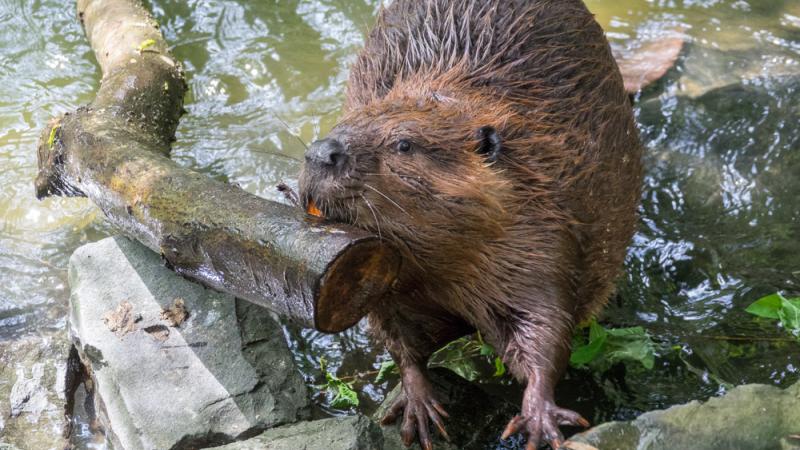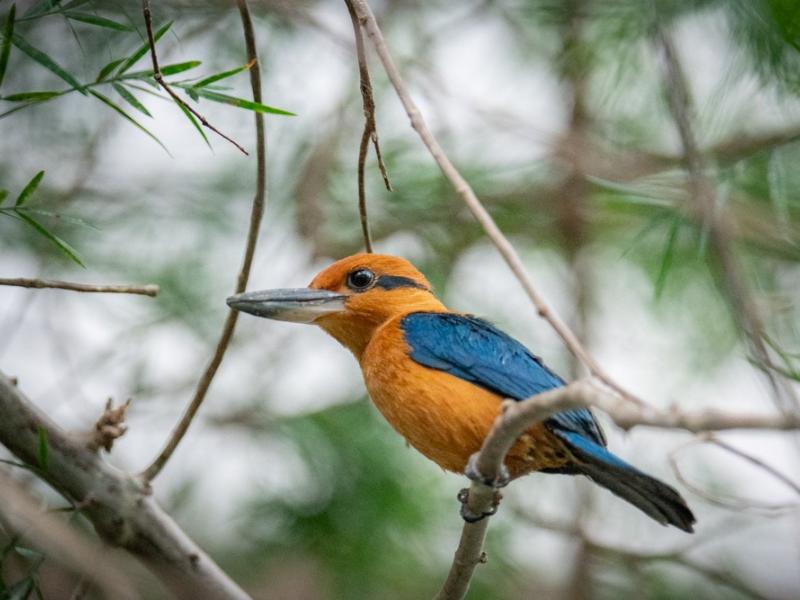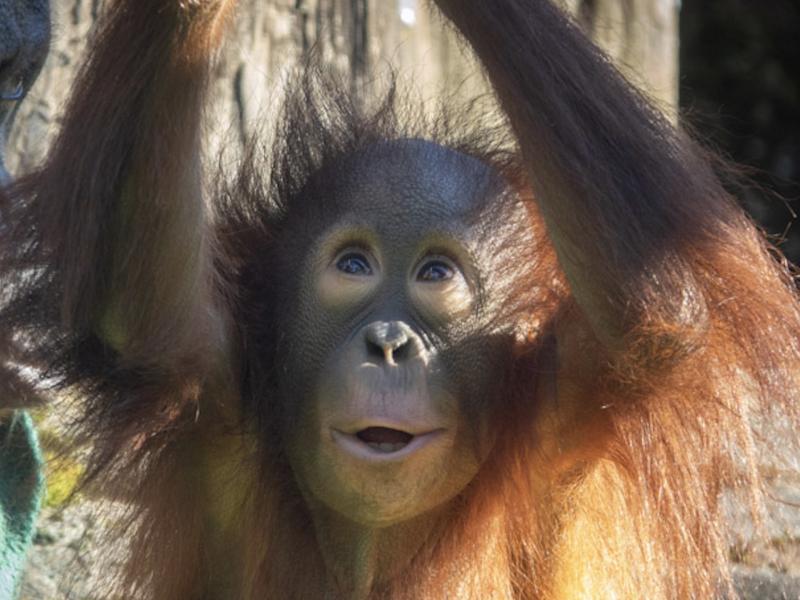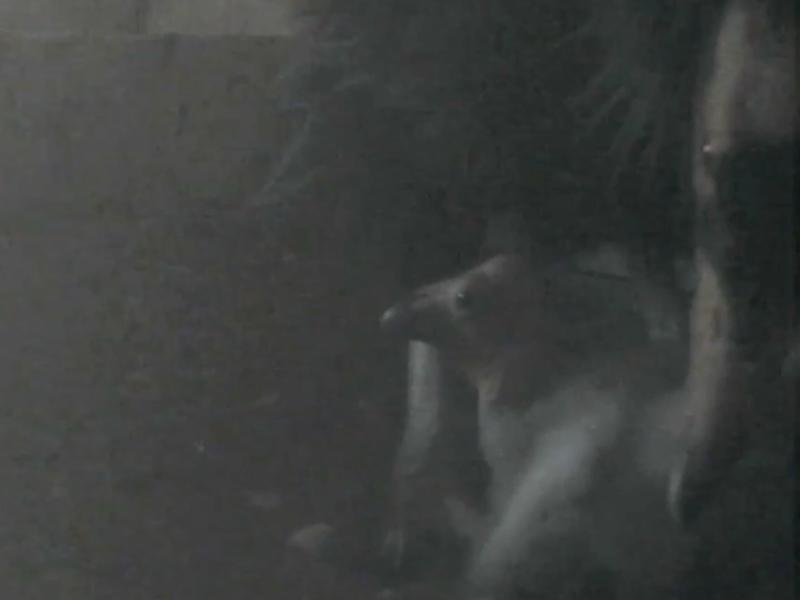Living with beavers: A Q&A with Darren Bolen

Beavers are ecosystem engineers. Their dams and lodges improve water quality and provide homes for salmon, waterfowl and other wildlife. Beavers thrive throughout most of Oregon’s waterways, but when they encounter human development it can lead to problems such as flooding or damage to vegetation.
With prevention and planning, beavers and humans can coexist. We spoke with Darren Bolen of the Bureau of Land Management to learn more about living with beavers on the landscape.
Oregon Zoo: Why are beavers important?
Darren Bolen: Beavers are a keystone species in any ecosystem, because of all of the changes that they make happen to the environment when they're there. And they're all good natural changes. The most notable one is if they are building dams and then you've got all of that water that's backed up and used by different species.
OZ: What are some issues that can arise when beavers encounter humans?
DB: Coexisting with beavers isn't always easy. But first and foremost, we want to live with beavers on the landscape with humans. That's what we're trying to do from the very beginning. It's best for the beavers and for people to be able to coexist.
I recommend that people take the steps that they can to be able to keep beavers on the landscape. With chewing down trees, you can cage trees. There's paint out there with sand in it that keeps beavers from chewing on trees, so on and so forth. We can take steps like using beaver deceivers or pond levelers. And then I always direct people over to Oregon Department of Fish & Wildlife; they have lots of information on their website for living with beavers.
OZ: What happens if beaver mitigation efforts don’t work?
DB: Sometimes mitigation efforts aren't going to be successful. So as a last resort, we end up being able to relocate some beavers into areas that we've deemed acceptable according to the Department of Fish & Wildlife guidelines.
OZ: You recently relocated a family of beavers in Oregon. What happened?
These beavers were in a drainage ditch right next to I-84, and they were causing issues, and so we were able to take these beavers and put them into a better situation for long-term survival. We have a wet meadow that we lost the family of beavers at a while back, it’s a very special habitat, and we needed to get a family of beavers to put in there.
OZ: You were able to trap the beavers and bring them to the Oregon Zoo for health checks, and then release them to a safer location. What was it like relocating the beaver family?
DB: The release went great. It's a very exciting time. Knowing that you've been working on this project for three years or so, and it finally came to fruition where you were able to relocate those beavers. And just seeing them released into the water … it's a feeling of pride is what it is.
OZ: How are the beavers doing now?
DB: So far, things are going extremely well. We have four beavers that are on camera … I think that they've paired up two and two. My hope for them now would be that they stay in that area and we have them there for years and years to come.
If you're having trouble with beavers on your property, you can contact your local department of fish and wildlife office for help. If you're in Oregon, the Oregon Department of Fish and Wildlife has resources available on how to live with beavers. Learn more at oregonzoo.org/beavers-coexist
In rare instances, wildlife officials relocate beavers as a last resort. This furry family is in a safer place thanks to:
More News

Zoo welcomes ultra-rare sihek kingfishers
The Oregon Zoo is home to many critically endangered species, but perhaps none as rare as its newest arrivals: a trio of sihek kingfishers.April 25, 2024

Jolene turns 2: Zoo to celebrate orangutan's 2nd birthday
The littlest member of the orangutan family is celebrating a big milestone this week: Jolene will turn 2 on Saturday.April 12, 2024

Seven chicks and counting: Zoo welcomes first condors of 2024
Seven fluffy chicks hatched last month at the Oregon Zoo’s Jonsson Center for Wildlife Conservation.April 5, 2024

